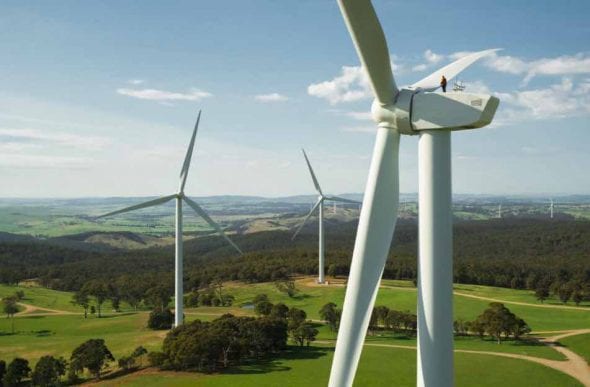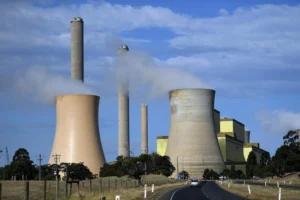 A consortium of Australian corporations including Telstra and ANZ have signed a major new deal to buy more than half of the power generated by what stands to be one of the largest wind farms in the Southern Hemisphere.
A consortium of Australian corporations including Telstra and ANZ have signed a major new deal to buy more than half of the power generated by what stands to be one of the largest wind farms in the Southern Hemisphere.
The deal, announced by Telstra on Thursday, commits the consortium to power purchase agreements covering all of the output of the 226MW first stage of the Murra Warra Wind Farm near Horsham in western Victoria, which has a total permitted capacity of 429MW.
The price for the PPA has not been revealed, as is the standard for such deals in Australia, but James Gerraty, Telstra Energy’s general manager for strategy and commercial, said it had secured long-term supply and price security “well below the current market level”.
RenewEconomy understands that the price is around the same as the stunning sub-$55/MWh price negotiated by Origin Energy earlier this year for the 530MW Stockyard Hill, proving that that price was not a “one-off” as some suggested.
That project also landed its financing today, and is notable because the cost of electricity from that project, even including renewable energy certificates, is just over half the cost of wholesale power in Victoria this year.
The new contract means that RES Australia – which is developing Murra Warra – can make a start on construction, having secured contracting certainty over the output from the first stage of the project.
RES, of course, is the same company through which Telstra made its debut in the energy market, signing a long-term contract to buy the output of RES’s 70MW Emerald solar farm in Queensland, in May of this year.
But as Gerraty notes in a company blog on Thursday, this time around the deal is a good deal bigger – not just due to the size of the wind farm, but because Telstra have done it as a consortium with other energy major users.
“From our perspective it’s a clear win, win – indeed it’s a win, win, win,” he said. “We get to lock in costs for one of our major inputs, energy, for the long term at well below current prices.
“We are supporting a high quality renewable energy project in a regional community that will generate enough electricity to power almost 220,000 Victorian homes.
“On top of that we get to bring some of our enterprise customers and some of Australia’s leading organisations in ANZ, Coca-Cola Amatil and the University of Melbourne along for the ride.”
Ben Burge, who is the executive director of Telstra Energy, also stressed the importance of the consortium, in locking in market leading pricing for both energy and renewable certificates, at levels well below the current wholesale market prices.
“ANZ, Coca-Cola Amatil and the University of Melbourne have shown leadership on how to collaborate in this space,” Burge said in comments on Thursday.
“From a Telstra perspective it is another example of how we can use our in-house capabilities to help our enterprise customers and some of Australia’s leading organisations become more involved in
the sector, support renewable energy and make a sizeable dint in their power costs.”
Other companies are also building their own solar and wind projects, or contracting them. Zinc refiner Sun Metals is building a 116MW solar plant in north Queensland, Nectar Farms plans a wind farm and battery storage to power the country’s biggest greenhouse, and the Whyalla Steelworks is planning a huge 1GW solar and storage investment.
According to Westpac, some 20 corporates are currently tendering for similar wind and solar opportunities.
Matt Rebbeck, RES Australia CEO, heralded the Murra Warra PPA as another landmark deal in the Australian market.
“RES operates in 10 countries and is the world’s largest independent renewable energy company. …Telstra has co-ordinated another landmark deal, which underwrites the first stage of this wind farm, which will bring investment and create a real jobs boost for regional Victoria, and reduce Australia’s emissions,” he said.
Construction of the Murra Warra Wind Farm will now begin in 2018 and the project is expected to be fully operational in mid-2019. Telstra will provide ongoing energy market services to the other consortium members as part of the transaction.
It is expected the construction of Murra Warra Stage 1 will create around 150 jobs as well as other opportunities for businesses in the local area.










